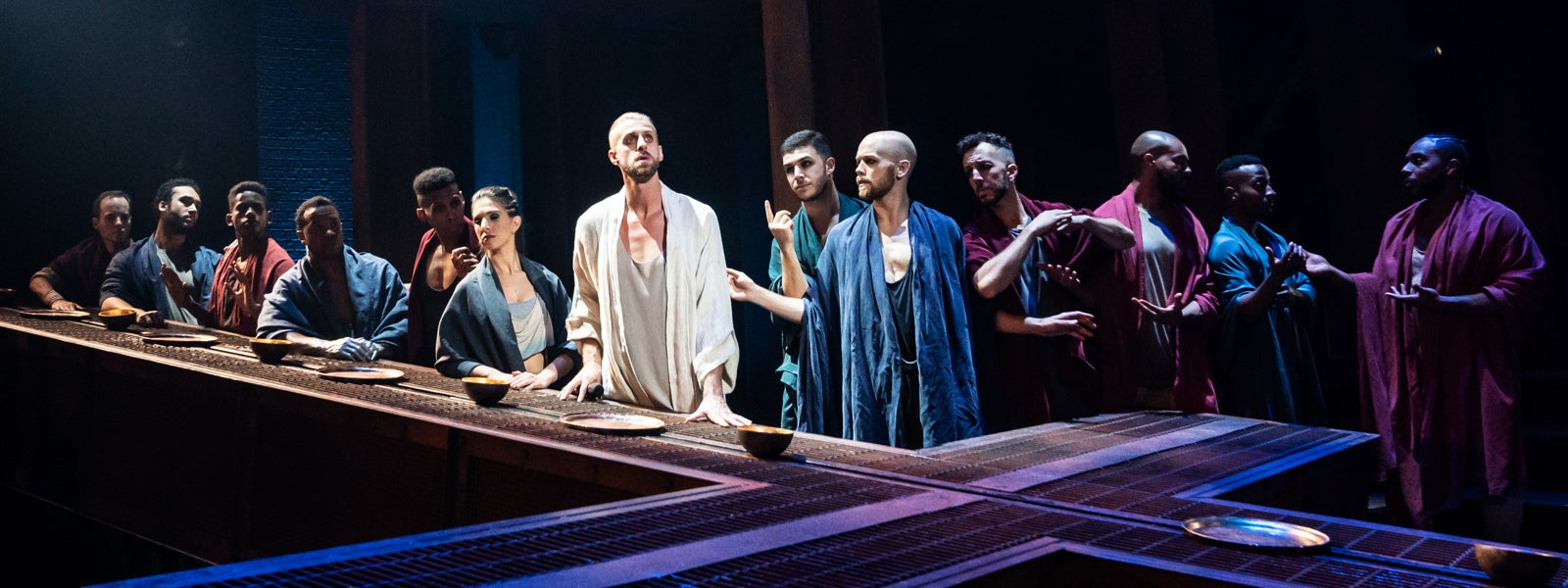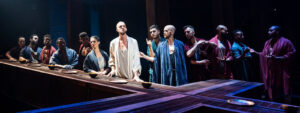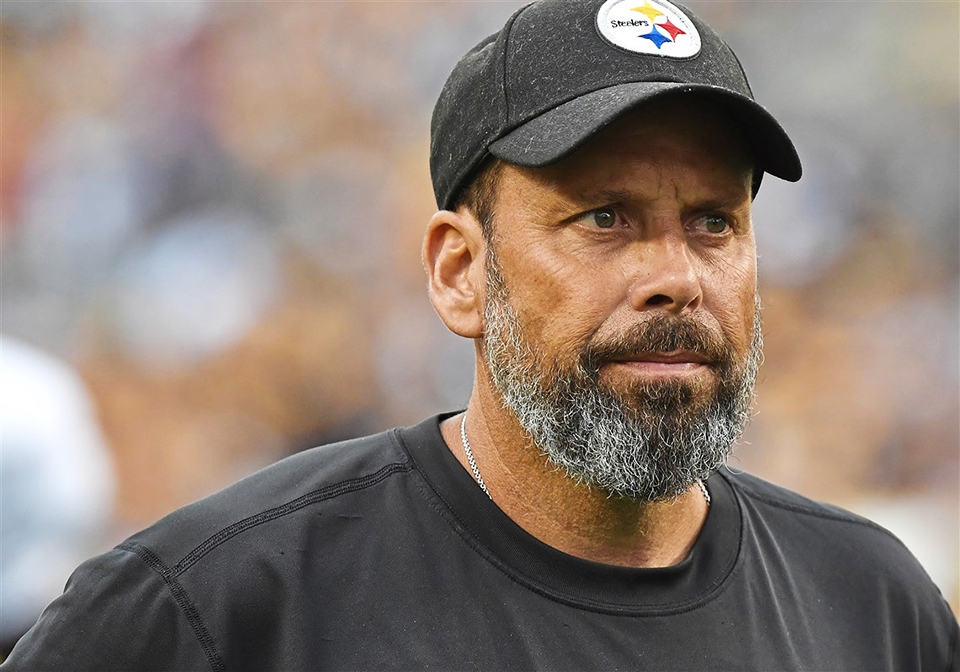

The cast of Jesus Christ Superstar posing as da Vinci’s “The Last Supper.”
Josiah Martin | Arts & Entertainment Editor
01/09/2020
When done right, Jesus Christ Superstar is a chilling, powerful show. The 50th anniversary touring production, which appeared at the Benedum Center from Dec. 31 to Jan. 5, did it right.
Director Timothy Sheader certainly understands Superstar’s strengths. True to Andrew Lloyd Webber and Tim Rice’s 1971 concept album, this production relies on a relatively small ensemble backed by a stellar band. Sheader has allowed the stellar vocal performances and moving lyrics to stand on their own. Despite not being a primarily visual production, it did feature stellar costumes and set design.
Emphasizing the show’s roots as a rock opera that depicts Jesus as a rock star-like celebrity figure, most of the main cast performed using handheld microphones. These also served as a visual motif throughout the show — Judas’ red-corded microphone hung in a single spotlight to represent his suicide, and that same red cord was used to restrain Jesus during “Trial Before Pilate.” The high priests entered with tall golden staffs that doubled as microphone stands for “This Jesus Must Die.”
Jesus Christ Superstar’s show stopping “Gethsemane” perfectly showed off this production’s unique style. Jesus (Aaron LaVigne), standing in a single spotlight at a microphone stand, performed the song with an acoustic guitar. In most versions of Jesus Christ Superstar, the song peaks with Jesus exclaiming “why” at an impressive G5. While LaVigne nails this note, its his delivery of the line “take me now, before I change my mind” — sung twice with a false ending in between — that shows off the full prowess of both him and the band.
LaVigne does not portray a particularly troubled Jesus. Many productions abandon the confident rock star swagger and style of the character, in favor of an emotionally torn Jesus facing his hesitancy toward his own execution from the first scene. Both methods are valid and captivating, but LaVigne’s is fresh. It is not until “The Last Supper” that he truly appears upset and vulnerable, making it all the more heartbreaking when he does.
However, Superstar always relies on its Judas, who is debatably the true protagonist of the show. James Delisco Beeks plays the role beautifully. The desperation he conveys in the opening number “Heaven on Their Minds” lingers in his voice and his eyes up until the astonishing titular “Jesus Christ Superstar.” Judas is one of the most emotionally and vocally demanding roles in the realm of musical theater, and Beeks was up to the challenge.
Alongside the perfectly cast and performed group of high priests, Beeks’s performance of “Damned for All Time/Blood Money” was a gloriously frantic, high-energy number. The song included a long saxophone solo, a feature of the original album, which elicited applause and cheers from the audience as it crescendoed into pure manic squealing. Most of the orchestra performed from the stage, and clearly had fun doing so. As they should — Jesus Christ Superstar is one of Webber and Rice’s finest works, and stands as a musical triumph off of the stage as well.
This tour has received acclaim across the board, and it’s clear why. This production, more than the recent NBC performance, and perhaps even more than the classic 1973 film, understands the goal and the style of these songs as they were originally recorded. Sheader and company have earned their place in the ongoing history of Jesus Christ Superstar.




